The prime minister’s new home

The Continent
The latest residence of the prime minister, located in the Yeka Hills near Addis Ababa, has completely altered the once serene landscape into a bustling construction zone. Heavy machinery operates day and night, clearing forests and farmlands to make way for the grand palace complex that will house Prime Minister Abiy Ahmed. 2. Apart from the main palace, the extensive 503-hectare area will also feature a luxurious hotel, guesthouses for dignitaries, ministerial accommodations, upscale residential buildings, and artificial lakes surrounded by palm trees. Additionally, new roads spanning 29km and an underground tunnel for emergency exits are part of the ambitious project. 3. Despite criticisms regarding the extravagant cost of the development, government officials defend it as a crucial step towards Ethiopia’s progress. The spokesperson for the prime minister, Billene Seyoum, emphasizes that the Chaka Project is not merely a personal indulgence but a significant national initiative aimed at reshaping the capital city.
The Yeka Hills in Addis Ababa, which used to be a peaceful and picturesque mountainous area, has undergone a significant transformation. It has now become a massive construction site, bustling with excavators and bulldozers that work tirelessly day and night. The purpose of this extensive construction is to build an extravagant palace complex, which will serve as the official residence for Prime Minister Abiy Ahmed. The project, known as the Chaka Project, is one of the most expensive infrastructure endeavors in Ethiopian history. Prime Minister Abiy Ahmed himself is actively involved in overseeing the progress of this development and frequently visits the site. However, the noise and disruption caused by the construction have become a source of annoyance for nearby residents, including diplomats. Despite their complaints, there seems to be little interest in addressing their concerns. This report is featured in The Continent issue 166, published on June 15, 2024.
The extensive complex, spanning over 503 hectares, encompasses more than just a palace. It also features a luxurious hotel, guesthouses for visiting dignitaries, residences for ministers, upscale housing blocks, and three man-made lakes adorned with artificial palm trees. In addition, there are plans to construct approximately 29 kilometers of new roads and an underground tunnel, which would serve as an escape route during emergencies or potential coup attempts. Despite criticisms labeling it as a mere vanity project, government officials assert that the development aligns with Ethiopia’s priorities for progress and growth. Billene Seyoum, the spokesperson for the prime minister, dismissed the notion of a simplistic narrative surrounding the “palace for the PM,” emphasizing that the Chaka Project is a significant endeavor aimed at transforming the landscape and surroundings of Addis Ababa into a grand national satellite city.
Not only nearby ambassadors, but also critics have expressed their grievances regarding the massive price tag of the project. This concern is heightened as 20 million Ethiopians are currently facing the risk of famine, and there is a desperate need for reconstruction funding in conflict-affected areas. Seyoum, however, dismisses these criticisms by highlighting the creation of thousands of jobs through the project. He argues that those who view development as “charity” are the ones typically making such complaints. The projected cost of the project, as stated by Abiy to parliamentarians, could reach $10 billion, which is more than half of Ethiopia’s annual budget for 2024/2025. Abiy assures that the funding will not come from state coffers but will be raised privately. Reports suggest that the United Arab Emirates government is a major investor, and some local businessmen claim to have been coerced into making financial contributions through threats and warnings of being excluded from official contracts.
To facilitate the construction of new buildings, a large number of farmers and residents are being forcibly removed from their homes. Notices of eviction have been posted on the walls of a local church, giving those whose names are on the list only a few days to vacate their properties. Some residents who refuse to comply are facing violent evictions, being detained in temporary prisons, or even being assaulted by security forces. The evictees have been instructed to find new homes in either Debre Berhan in Amhara or Welega in Oromia, depending on their ethnicity.
According to Seyoum, all the evictions are being carried out in accordance with the law. She claims that land in Ethiopia is owned by the state, and the government has the authority to develop it fully within the legal framework. Additionally, she argues that most of the land being developed by the Chaka Project is uninhabited, and local residents are aware of the development implications of expanding public infrastructure.
Access to the area is strictly monitored, with security checkpoints placed on the roads leading in and out. People who previously used the area, such as churchgoers at the Washa Mikael Rock-Hewn Church and aspiring athletes who trained on the hills, are now prohibited from entering. Plain-clothes policemen patrol the area to prevent anyone from taking photographs of the construction.
The Yeka Hills development represents the most recent and costly endeavor in a series of contentious initiatives led by Abiy to modernize and enhance Addis Ababa. These initiatives encompass the restoration of Emperor Menelik II’s Grand Palace as part of the “Unity Park” project, which features a museum and a zoo. Additionally, a significant portion of the historic Piassa district in the capital has been demolished to make room for contemporary apartment complexes and walkways. Abiy’s actions have served as a source of inspiration for other Ethiopian officials, prompting them to invest in similarly extravagant ventures. Shimales Abdisa, the president of Oromia, the state surrounding Addis, has embarked on his own palace project, set to be finished by next year. This new palace, situated in one of the more affluent areas of the capital, spans over six hectares and is estimated to cost over $1 billion. It will serve as the headquarters and residences for Oromia leaders. In order to accommodate this development, existing homes were demolished and residents were displaced.
Abiy’s actions have motivated other Ethiopian leaders to embark on equally ambitious endeavors. The president of Oromia has initiated a grand palace project, estimated to exceed $1 billion in expenses.
Abiy is not the sole global leader who has constructed an extravagant new residence for himself. In Egypt, military dictator Abdel Fattah El-Sisi is allocating $59 billion towards the development of a fresh capital city, aptly named the New Administrative Capital, with a presidential palace as its centerpiece. Similarly, in Turkey, President Recep Tayyip Erdoğan unveiled the $615 million “White Palace” outside Ankara in 2014, boasting it as a symbol of his influential and prosperous “new Turkey”. While Erdoğan continues to reside in his creation, not all leaders share the same fortune. Sudanese President Omar al-Bashir occupied the newly built Republican Palace in Khartoum in 2015, only to be overthrown during a revolution in 2019. In fact, the palace became a focal point for the demonstrations against his autocratic regime.
The most notorious presidential palace was owned by Zairean dictator Mobutu Sese Seko, who constructed the “Versailles of the Jungle” in his hometown of Gbadolite, featuring a nuclear bunker and an airport suitable for a Concorde. Today, it stands in disrepair, mirroring the downfall of his self-proclaimed empire – a warning, maybe, for Abiy’s aspirations.
Data
How much is $10-billion?
Abiy Ahmed informed the members of parliament that his recently constructed palace complex would require a substantial investment of $10 billion. Undoubtedly, this is a significant amount of money. However, if he were to utilize this financial resource to acquire electrical power, the potential magnitude of electricity that could be harnessed is worth considering.
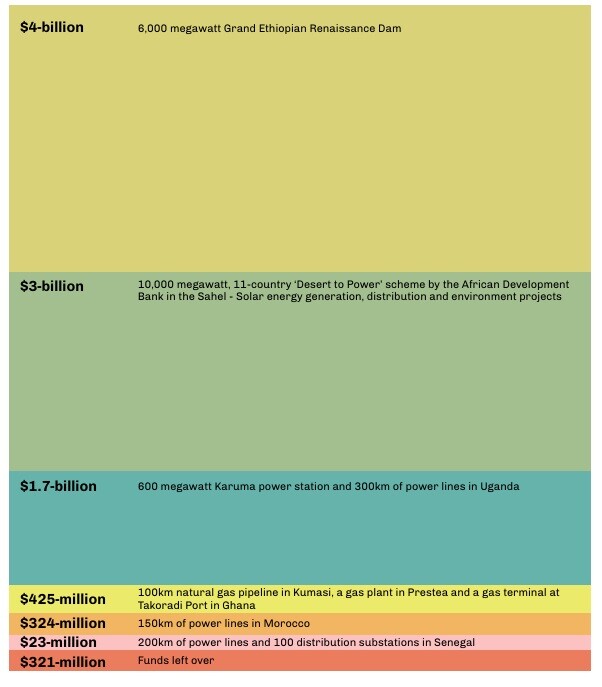
Review
An intimate, unsettling portrait of the man who would be emperor
Simon Allison
 Abiy Ahmed’s fate was predicted by his mother, an extraordinary woman who was an Orthodox Christian and married a Muslim coffee farmer from Oromia. They settled in Beshasha, a small town in central Ethiopia. Abiy, her fourth child, was born just two years after Emperor Haile Selassie was overthrown. She named him Abiyot, which means “revolution” in Amharic, and from a young age, she would whisper in his ear that he was destined to rule and become a king one day. Throughout his life, Abiy has strived to fulfill this prophecy, and remarkably, he has succeeded, although he has faced challenges in reconciling its contradictions. Is he the emperor who will restore Ethiopia’s glorious past, or the revolutionary who will dismantle it all? This is the question that Tom Gardner aims to answer in his new biography of the prime minister titled “The Abiy Project: God, Power, and War in the New Ethiopia.” Gardner, who was The Economist’s correspondent for the Horn of Africa based in Addis Ababa, was expelled by Abiy’s government in 2022.
Abiy Ahmed’s fate was predicted by his mother, an extraordinary woman who was an Orthodox Christian and married a Muslim coffee farmer from Oromia. They settled in Beshasha, a small town in central Ethiopia. Abiy, her fourth child, was born just two years after Emperor Haile Selassie was overthrown. She named him Abiyot, which means “revolution” in Amharic, and from a young age, she would whisper in his ear that he was destined to rule and become a king one day. Throughout his life, Abiy has strived to fulfill this prophecy, and remarkably, he has succeeded, although he has faced challenges in reconciling its contradictions. Is he the emperor who will restore Ethiopia’s glorious past, or the revolutionary who will dismantle it all? This is the question that Tom Gardner aims to answer in his new biography of the prime minister titled “The Abiy Project: God, Power, and War in the New Ethiopia.” Gardner, who was The Economist’s correspondent for the Horn of Africa based in Addis Ababa, was expelled by Abiy’s government in 2022.
These years will be remembered as some of the most remarkable in Ethiopia’s extensive history, and Gardner witnessed every moment of it: Abiy’s sudden and dramatic rise to power, his unprecedented reforms that were once unimaginable for both the ruling party and the state, the resolution of the long-standing war with Eritrea, which earned Abiy the Nobel Peace Prize, and then the devastating descent into civil war and internal conflict, much of which was instigated by the prime minister himself.
For better or worse, Abiy is reshaping Ethiopia according to his own vision – but who exactly is he? Answering that question is not a simple task.
“It was an undeniable truth: the closer someone was to Abiy, the less inclined they were to discuss him,” Gardner writes. Nevertheless, the uncovered details by Gardner present a disconcerting portrayal of a man who believes he has been chosen by God for greatness, regardless of the number of casualties that accumulate along the way.
For better or worse, or both, Abiy is remaking Ethiopia in his own image – but who, exactly, is he? Answering that question is not straightforward.
Growing up in a deteriorated residence in Beshasha, Abiy was undoubtedly aware of his lower social status as a younger and less favored son, given that his mother, Tezeta, sold honey wine from their home. His relationship with his mostly absent father was difficult, and when his father, Ahmed Ali, passed away in 2019, Abiy barely acknowledged it. However, Abiy idolized his strong-willed and independent mother, Tezeta, and it was from her that he derived much of his immense self-confidence.
From a young age, Abiy displayed a strong interest in politics and became involved in the local branch of the ruling coalition. Initially, he started by delivering tea to more senior members and later joined the national army. Those who knew him during this time recalled him zooming around the camp on a motorcycle or indulging in khat, a local stimulant, and tej honey wine at nearby bars. Despite his mischievous nature, his charm always managed to extricate him from trouble. This same charm would later prove effective in his interactions with world leaders.
Abiy dedicated 15 years of his life to the army, specializing as a radio operator. It was during this period that he established important political connections and honed his language skills, including a basic understanding of Tigrinya, which would play a crucial role in his future success. He also experienced the horrors of the brutal trench warfare against Eritrea in the late 1990s and narrowly escaped death. One fateful day, while positioning his antenna, the rest of his unit was annihilated in an explosion.
Abiy’s subsequent action involved infiltrating Ethiopia’s secretive intelligence establishment. He personally orchestrated this move by approaching a high-ranking military intelligence official with a daring proposition: to publish a dictionary translating Amharic to English, a work he had authored. Although the dictionary never made it to publication, it garnered attention for Abiy, leading to his recruitment into the newly formed Information Network Security Agency (INSA). This agency, loosely modeled after America’s National Security Agency, was responsible for safeguarding the government against cyber threats. Abiy’s role within INSA involved a six-month stint in South Africa, where he studied cryptography.
However, Abiy was not solely focused on his official duties. As he swiftly ascended the ranks of INSA, he also honed his skills in the clandestine realm of palace politics, a domain for which he would later become renowned. He cultivated a reputation for surreptitiously monitoring private phone conversations and leveraging the obtained information against his adversaries. It is worth noting that these allegations were never substantiated, and due to the secretive nature of Ethiopia’s security agencies, they are unlikely to ever be confirmed.
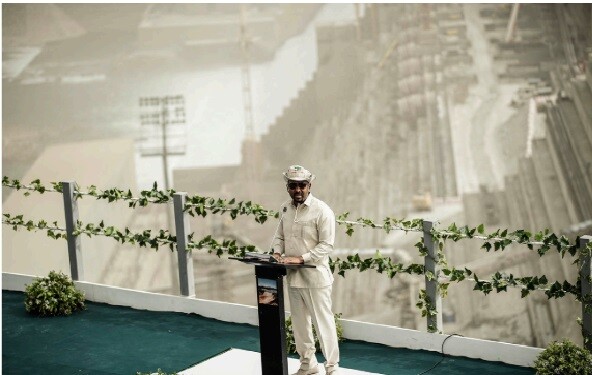
Abiy began attending the Ethiopian Full Gospel Believers’ Church during this period, which is the largest Pentecostal church in the country. While most Ethiopians are Ethiopian Orthodox Christians or Muslims, Pentecostal churches have been gaining influence and size in recent years. Their teachings prioritize individuality over the collective and modernity over tradition. Abiy appeared to be particularly drawn to the Prosperity Gospel, which links financial success with God’s favor. This is evident in his decision to rename the ruling party the Prosperity Party. Abiy’s emphasis on appearances can be seen in his meticulous grooming habits and his preference for modern, corporate aesthetics in the offices he worked in, including that of the prime minister. His ambitious and costly efforts to modernize Addis Ababa, such as constructing new roads, parks, museums, and a multi-billion dollar palace complex for himself as the prime minister, reflect this inclination.
Gardner concludes that Abiy’s transformation of Addis Ababa was not merely a matter of aesthetics. Similar to King Solomon’s biblical Jerusalem, a clean and prosperous Addis Ababa represented both a path to heaven and a prosperous Ethiopia in Abiy’s vision. It symbolized the future of the nation in a miniature form. However, despite the city’s apparent success, the nation itself is in a state of disarray. Gardner provides a compelling analysis of how Abiy exploited tensions between regions and ethnic groups to consolidate power and eliminate his adversaries. Unfortunately, once in power, these tensions only escalated, resulting in a devastating civil war between the federal government and Tigray province. This war has claimed the lives of tens of thousands and left millions at risk of famine. Gardner’s descriptions of the war and its lasting consequences are difficult to digest. Although a peace agreement was signed in November 2022, new conflicts have emerged in the Amhara region, with Ethiopian troops being implicated in war crimes. Additionally, other parts of the country are becoming increasingly restless. Abiy may have fulfilled his mother’s prophecy and become a de facto king, but the question remains: what exactly is he the king of?
Gardner concludes that the power Abiy holds is fragile, with strict limitations. Despite facing no significant competition for the throne, Ethiopia has become a more perilous and violent place than it has been in years. While the central state’s authority, under former prime minister Meles Zenawi, used to reach every corner of the country, it now barely extends beyond the capital.
Abiy’s supporters argue that all of this is part of a strategic plan, and the prime minister still nurtures ambitious goals. He has previously mentioned the concept of a unified state encompassing the entire Horn of Africa, undoubtedly governed from his new residence in Addis.
In accordance with an old Amharic proverb that Abiy supposedly values, there will be darkness before the dawn. The prime minister seems to have realized that reviving Ethiopia cannot happen overnight. It will require a considerable amount of time, possibly more than he initially anticipated. However, he remains adamant that the light will eventually shine. At this moment, what is crucial above all else is for him to retain power until that moment arrives – even if he is no longer loved, but at the very least feared.
The Abiy Project: God, Power and War in the New Ethiopia by Tom Gardner, published by Hurst in June 2024

The conflict in Tigray, spanning from 2020 to 2022, resulted in the deaths of a minimum of 600,000 individuals and the displacement, trauma, or exposure to famine of millions. The exact number of women who experienced sexual violence during the conflict may remain unknown, however, research indicates that it could be over 100,000.
Arlette Bashizi’s Survivors, which received an Honourable Mention in the Africa category of the 2024 World Press Photo Contest, showcases the story of Shila. Prior to the invasion of Eritrean soldiers in her town, Shila operated a hairdressing salon. Tragically, she endured three months of repeated rape during this period. Currently seeking refuge at a facility for internally displaced individuals alongside fellow survivors of sexual violence, Shila is actively participating in cooking classes and receiving psychological assistance from a charitable organization in Mekele. Although her youngest child was conceived during her captivity, her other children remain unaware of this harrowing experience. Uncertain of her own strength, Shila contemplates whether she will ever find the courage to reveal the truth to her children. –– Read more
From Nobel Peace Prize to Civil War: The Captivating Saga of Ethiopia’s Leader

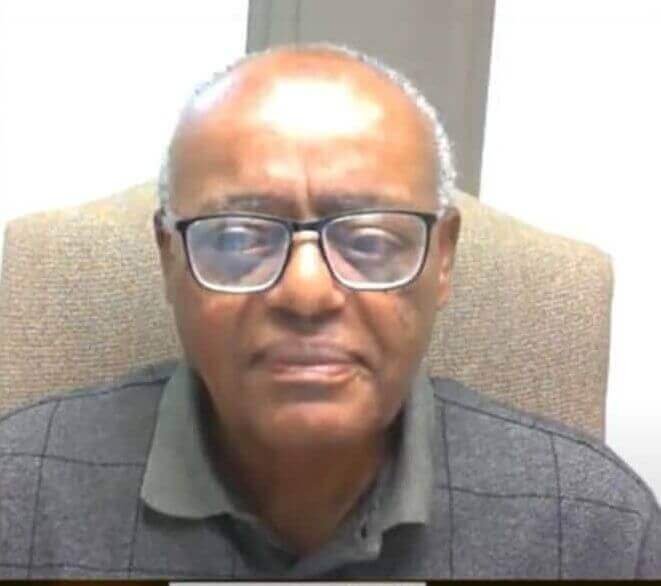

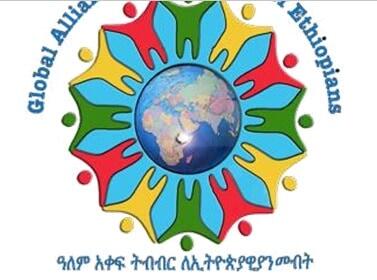




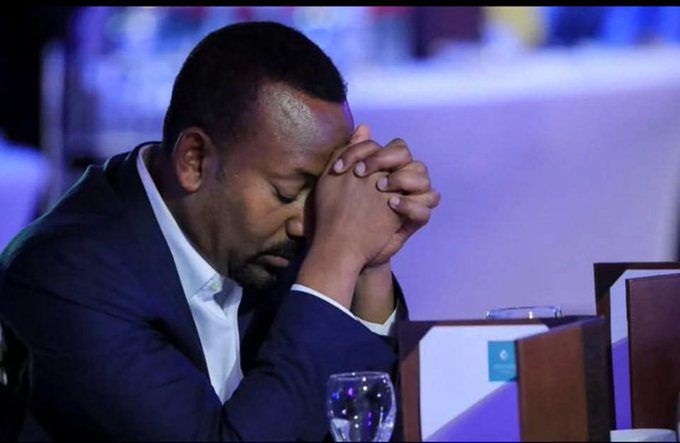









I can predict he will not get a chance to live in this palace when it is completed. If he is luck his dead body will buried in this place.
It is laughable that two criminals building very expensive palaces. The right thing to do for this two genociders is to build more jails because sooner or later they will be living in these jails.